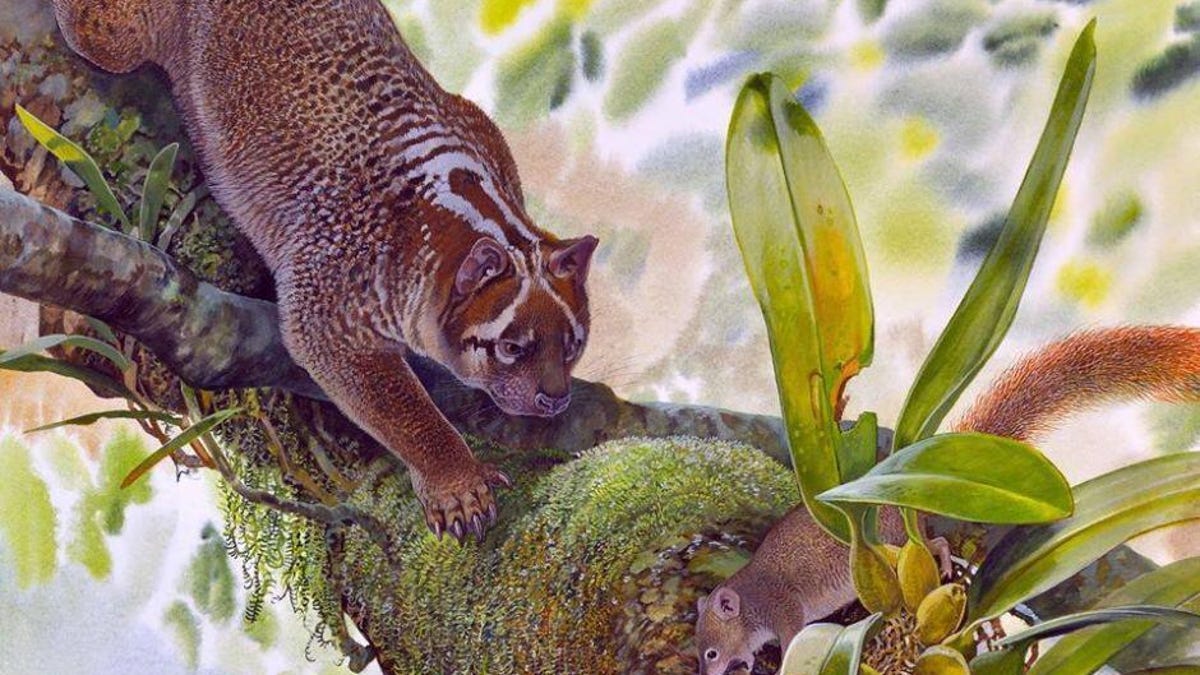New lion, size of house cat, with bone-crushing teeth, is found in fossil form
In Australia, researchers discover a hitherto unknown type of lion that lived over 24 million years ago.

An artist's rendition of the newly discovered marsupial lion, Lekaneleo roskellyae, hunting in northwestern Queensland.
A marsupial lion the size of a domestic cat, with teeth sharp enough to break bones, has been confirmed as a new genus.
Paleontologists from the University of New South Wales discovered the remains of the tiny lion at Australia's Riversleigh World Heritage Area in Queensland, where scientists have been finding fossils for decades.
The new marsupial lion was previously believed to be part of the Priscileo roskellyae (Thylacoleonidae) genus because of its teeth and small size. But when researchers took a closer look at the skull and lower jaw, they noticed the skull anatomy was different from that of other marsupial lions.
"As we found more and better specimens at Riversleigh, we began to realize it didn't belong to that group at all," University of New South Wales' Biological, Earth and Environmental Science professor Michael Archer told CNN on Friday. "It was a new kind of marsupial that hadn't been seen before. It was a different branch on the marsupial lion family tree."
In a paper published this month in the Journal of Vertebrate Paleontology, researchers confirmed that the mammal was a new genus of the marsupial lion.
Researchers think the marsupial lion, named Lekaneleo roskellyae, lived in trees and ate birds, snakes and other small animals with its bolt-cutting teeth.
Marsupial lions died out 35,000 years ago, so researchers look to fossilized remains to help determine how they died and whether climate change had any impact.
"We see many of these very strange groups that don't have any living representatives, slowly disappearing," Archer told CNN. "Understanding this whole relationship between environmental change and biodiversity is very important in understanding and anticipating what's going to happen now."

